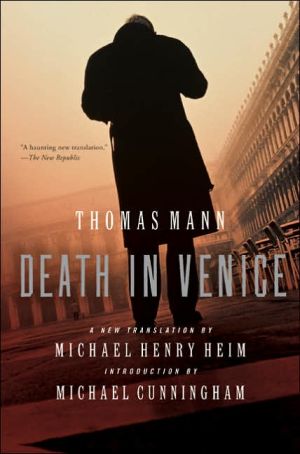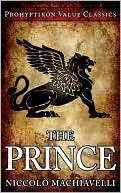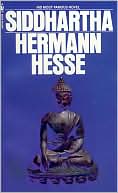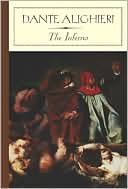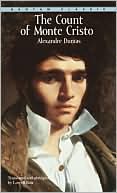Death in Venice
This critical edition of Mann's 1912 modernist novella reprints the widely praised translation by David Luke. Accompanying this text, five critical essays examine the work from five contemporary critical perspectives:\ Psychoanalytic Criticism, by Rodney Symington\ Reader-Response Criticism, by Lilian Furst\ Cultural Criticism, by John Burt Foster, jr.\ Gender Criticism, by Robert Tobin\ New History, by Russell Berman\ A succinct introduction to the history, principles, and practice of each...
Search in google:
This critical edition of Mann's 1912 modernist novella reprints the widely praised translation by David Luke. Accompanying this text, five critical essays examine the work from five contemporary critical perspectives: Psychoanalytic Criticism, by Rodney Symington Reader-Response Criticism, by Lilian Furst Cultural Criticism, by John Burt Foster, jr. Gender Criticism, by Robert Tobin New History, by Russell Berman A succinct introduction to the history, principles, and practice of each critical approach precedes each essay. Readers may also benefit from extensive bibliographies following the essays and a glossary of critical and theoretical terms. The editor's introduction to the book discusses biographical and historical contexts for both Mann and his text. Her survey of critical responses to it starts in 1912 and ends in 1998.Kirkus ReviewsNew versions of 12 celebrated stories, including the famous title novella, many previously collected in Mann's seminal Stories of Three Decades. Neugroschel's persuasive "Preface" makes a strong case for fresh translations, given both this century's inevitable linguistic shifts and Mann's employment within individual works of specific vocabularies and styles (e.g., those of Wagnerian opera in the hair-raising "The Blood of the Walsungs"). And Neugr"schel essentially finesses the issue of revealing the stories' inherent sexuality; their author was, after all, a master of elegant indirection dedicated to muted presentations of matters that were anathema to both his public and his own sedulously respectable persona. That said, it's wonderful to have vivid, lucid English versions of Mann's sophisticated portrayals of sexual obsession and humiliation ("Little Herr Friedemann"), illness- as-metaphor in a tale ("Tristan") that concisely prefigures The Magic Mountain, and the transfiguring intersection of artistic with homosexual passion (Death in Venice, Tonio Kr"ger). Brilliant work, in any case, from one of the century's great writers.
Death in Venice\ \ By Thomas Mann \ Buccaneer Books Inc\ Copyright ©1983 Thomas Mann\ All right reserved.\ ISBN: 0899664555 \ \ \ Chapter One\ Gustav Aschenbach or von Aschenbach, as he had officially been known since his fiftieth birthday, set out alone from his residence in Munich's Prinzregentenstrasse on a spring afternoon in 19.. -- a year that for months had shown so ominous a countenance to our continent -- with the intention of taking an extended walk. Overwrought from the difficult and dangerous labors of the late morning hours, labors demanding the utmost caution, prudence, tenacity, and precision of will, the writer had even after the midday meal been unable to halt the momentum of the inner mechanism -- the motus animi continuus in which, according to Cicero, eloquence resides -- and find the refreshing sleep that the growing wear and tear upon his forces had made a daily necessity. And so, shortly after tea he had sought the outdoors in the hope that open air and exercise might revive him and help him to enjoy a fruitful evening.\ It was early May, and after a few cold, wet weeks a mock summer had set in. The Englischer Garten, though as yet in tender bud, was as muggy as in August and full of vehicles and pedestrians on the city side. At Aumeister, to which he had been led by ever more solitary paths, Aschenbach briefly scanned the crowded and lively open-air restaurant and the cabs andcarriages along its edge, then, the sun beginning to sink, headed home across the open fields beyond the park, but feeling tired and noticing a storm brewing over Föhring, he stopped at the Northern Cemetery to wait for the tram that would take him straight back to town.\ As it happened, there was no one at the tram stop or thereabouts. Nor was any vehicle to be seen on the paved roadway of the Ungererstrasse -- whose gleaming tracks stretched solitary in the direction of Schwabing -- or on the road to Föhring. There was nothing stirring behind the stonemasons' fences, where crosses, headstones, and monuments for sale formed a second, uninhabited graveyard, and the mortuary's Byzantine structure opposite stood silent in the glow of the waning day. Its façade, decorated with Greek crosses and brightly hued hieratic patterns, also displayed a selection of symmetrically arranged gilt-lettered inscriptions concerning the afterlife, such as "They Enter into the Dwelling Place of the Lord" or "May the Light Everlasting Shine upon Them," and reading the formulas, letting his mind's eye lose itself in the mysticism emanating from them, served to distract the waiting man for several minutes until, resurfacing from his reveries, he noticed a figure in the portico above the two apocalyptic beasts guarding the staircase, and something slightly out of the ordinary in the figure's appearance gave his thoughts an entirely new turn.\ Whether the man had emerged from the chapel's inner sanctum through the bronze gate or mounted the steps unobtrusively from outside was uncertain. Without giving the matter much thought, Aschenbach inclined towards the first hypothesis. The man -- of medium height, thin, beardless, and strikingly snub-nosed -- was the red-haired type and had its milky, freckled pigmentation. He was clearly not of Bavarian stock and, if nothing else, the broad, straight-brimmed bast hat covering his head lent him a distinctly foreign, exotic air. He did, however, have the customary knapsack strapped to his shoulders, wore a yellowish belted suit of what appeared to be loden, and carried a gray waterproof over his left forearm, which he pressed to his side, and an iron-tipped walking stick in his right hand, and having thrust the stick diagonally into the ground, he had crossed his feet and braced one hip on its crook. Holding his head high and thus exposing a strong, bare Adam's apple on the thin neck rising out of his loose, open shirt, he gazed alert into the distance with colorless, red-lashed eyes, the two pronounced vertical furrows between them oddly suited to the short, turned-up nose. Thus -- and perhaps his elevated and elevating position contributed to the impression -- there was something of the overseer, something lordly, bold, even wild in his demeanor, for be it that he was grimacing, blinded by the setting sun, or that he had a permanent facial deformity, his lips seemed too short: they pulled all the way back, baring his long, white teeth to the gums.\ Aschenbach's half-distracted, half-inquisitive scrutiny of the stranger may have been lacking in discretion, for he suddenly perceived that the man was returning his stare and was indeed so belligerently, so directly, so blatantly determined to challenge him publicly and force him to withdraw it that Aschenbach, embarrassed, turned away and set off along the fence, vaguely resolved to take no further notice of him. A minute later he had forgotten the man. It may have been the stranger's perambulatory appearance that acted upon his imagination or some other physical or psychological influence coming into play, but much to his surprise he grew aware of a strange expansion of his inner being, a kind of restive anxiety, a fervent youthful craving for faraway places, a feeling so vivid, so new or else so long outgrown and forgotten that he came to a standstill and -- hands behind his back, eyes on the ground, rooted to the spot -- examined the nature and purport of the feeling.\ It was wanderlust, pure and simple, yet it had come upon him like a seizure and grown into a passion -- no, more, an hallucination. His desire sprouted eyes, his imagination, as yet unstilled from its morning labors, conjured forth the earth's manifold wonders and horrors in his attempt to visualize them: he saw. He saw a landscape, a tropical quagmire beneath a steamy sky -- sultry, luxuriant, and monstrous -- a kind of primordial wilderness of islands, marshes, and alluvial channels; saw hairy palm shafts thrusting upward, near and far, from rank clusters of bracken, from beds of thick, swollen, and bizarrely burgeoning flora; saw fantastically malformed trees plunge their roots through the air into the soil, into stagnant, shadow-green, looking-glass waters ...\ \ Continues... \ \ \ Excerpted from Death in Venice by Thomas Mann Copyright ©1983 by Thomas Mann. Excerpted by permission.\ All rights reserved. No part of this excerpt may be reproduced or reprinted without permission in writing from the publisher.\ Excerpts are provided by Dial-A-Book Inc. solely for the personal use of visitors to this web site. \ \
About the Series About This Volume PART I. DEATH IN VENICE: THE COMPLETE TEXT Introduction: Biographical and Historical Contexts The Complete Text [Translated by David Luke] PART II. DEATH IN VENICE: A CASE STUDY IN CONTEMPORARY CRITICISM Critical History of Death in Venice Psychoanalytic Criticism and Death in Venice What Is Psychoanalytic Criticism? Psychoanalytic Criticism: A Selected Bibliography A Psychoanalytic Perspective: Rodney Symington, The Eruption of the Other: Psychoanalytic Approaches to Death in Venice Reader-Response Criticism and Death in Venice What Is Reader-Response Criticism? Reader-Response Criticism: A Selected Bibliography A Reader-Response Perspective: Lillian R. Furst, The Potential Deceptiveness of Reading in Death in Venice Cultural Criticism and Death in Venice What Is Cultural Criticism? Cultural Criticism: A Selected Bibliography A Cultural Perspective: John Burt Foster Jr., Why Is Tadzio Polish? Kultur and Cultural Multiplicity in Death in Venice Gender Criticism and Death in Venice What Is Gender Criticism? Gender Criticism: A Selected Bibliography A Perspective on Gender and Sexuality Robert Tobin, The Life and Work of Thomas Mann: A Gay Perspective New Historicism and Death in Venice What Is New Historicism? New Historicism: A Selected Bibliography A New Historicist Perspective: Russell A. Berman, History and Community in Death in Venice Glossary of Critical and Theoretical Terms About the Contributors
\ Kirkus ReviewsNew versions of 12 celebrated stories, including the famous title novella, many previously collected in Mann's seminal Stories of Three Decades. Neugroschel's persuasive "Preface" makes a strong case for fresh translations, given both this century's inevitable linguistic shifts and Mann's employment within individual works of specific vocabularies and styles (e.g., those of Wagnerian opera in the hair-raising "The Blood of the Walsungs"). And Neugr"schel essentially finesses the issue of revealing the stories' inherent sexuality; their author was, after all, a master of elegant indirection dedicated to muted presentations of matters that were anathema to both his public and his own sedulously respectable persona. That said, it's wonderful to have vivid, lucid English versions of Mann's sophisticated portrayals of sexual obsession and humiliation ("Little Herr Friedemann"), illness- as-metaphor in a tale ("Tristan") that concisely prefigures The Magic Mountain, and the transfiguring intersection of artistic with homosexual passion (Death in Venice, Tonio Kr"ger). Brilliant work, in any case, from one of the century's great writers.\ \
